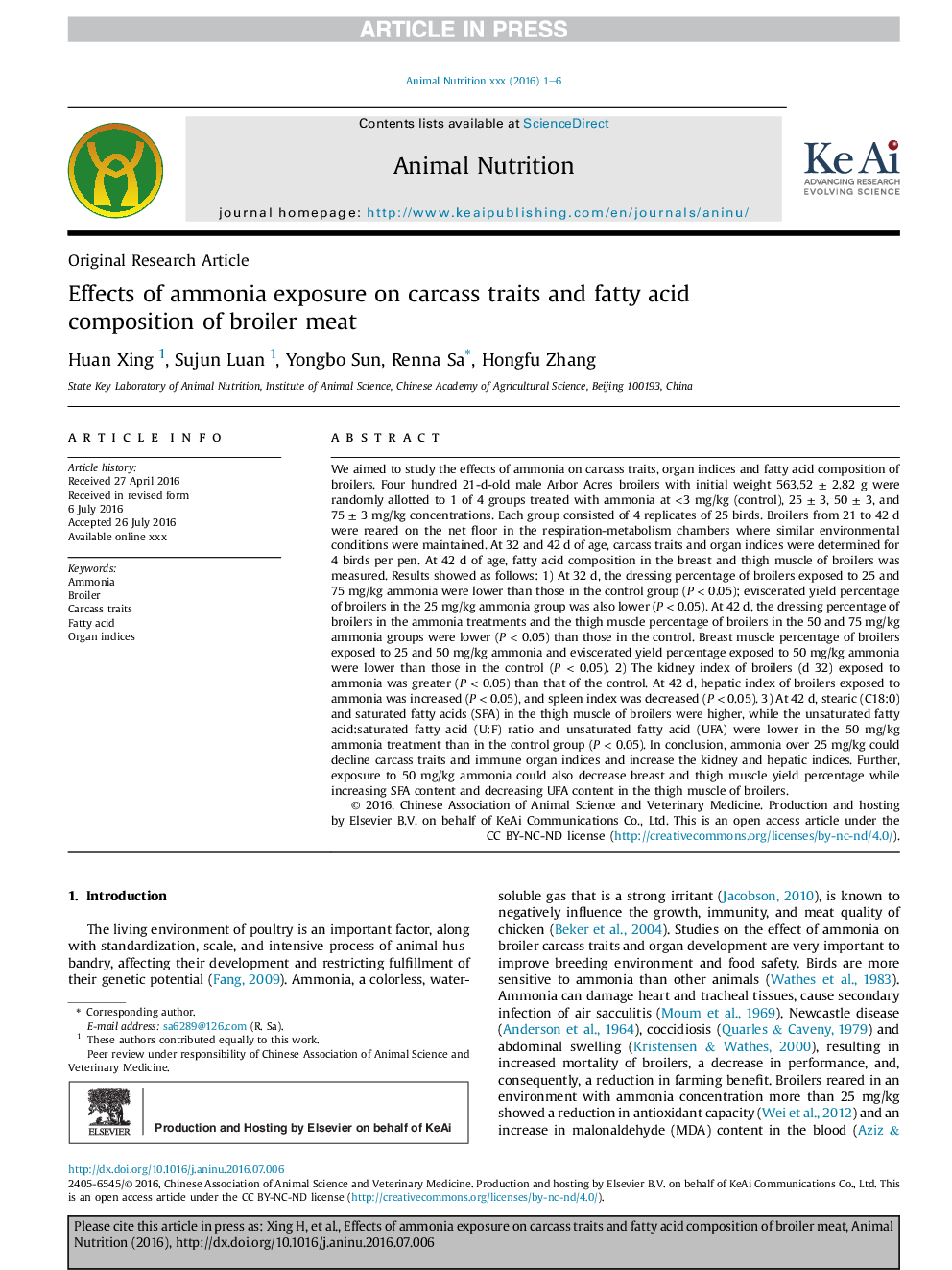| Article ID | Journal | Published Year | Pages | File Type |
|---|---|---|---|---|
| 8882649 | Animal Nutrition | 2016 | 6 Pages |
Abstract
We aimed to study the effects of ammonia on carcass traits, organ indices and fatty acid composition of broilers. Four hundred 21-d-old male Arbor Acres broilers with initial weight 563.52 ± 2.82 g were randomly allotted to 1 of 4 groups treated with ammonia at <3 mg/kg (control), 25 ± 3, 50 ± 3, and 75 ± 3 mg/kg concentrations. Each group consisted of 4 replicates of 25 birds. Broilers from 21 to 42 d were reared on the net floor in the respiration-metabolism chambers where similar environmental conditions were maintained. At 32 and 42 d of age, carcass traits and organ indices were determined for 4 birds per pen. At 42 d of age, fatty acid composition in the breast and thigh muscle of broilers was measured. Results showed as follows: 1) At 32 d, the dressing percentage of broilers exposed to 25 and 75 mg/kg ammonia were lower than those in the control group (P < 0.05); eviscerated yield percentage of broilers in the 25 mg/kg ammonia group was also lower (P < 0.05). At 42 d, the dressing percentage of broilers in the ammonia treatments and the thigh muscle percentage of broilers in the 50 and 75 mg/kg ammonia groups were lower (P < 0.05) than those in the control. Breast muscle percentage of broilers exposed to 25 and 50 mg/kg ammonia and eviscerated yield percentage exposed to 50 mg/kg ammonia were lower than those in the control (P < 0.05). 2) The kidney index of broilers (d 32) exposed to ammonia was greater (P < 0.05) than that of the control. At 42 d, hepatic index of broilers exposed to ammonia was increased (P < 0.05), and spleen index was decreased (P < 0.05). 3) At 42 d, stearic (C18:0) and saturated fatty acids (SFA) in the thigh muscle of broilers were higher, while the unsaturated fatty acid:saturated fatty acid (U:F) ratio and unsaturated fatty acid (UFA) were lower in the 50 mg/kg ammonia treatment than in the control group (P < 0.05). In conclusion, ammonia over 25 mg/kg could decline carcass traits and immune organ indices and increase the kidney and hepatic indices. Further, exposure to 50 mg/kg ammonia could also decrease breast and thigh muscle yield percentage while increasing SFA content and decreasing UFA content in the thigh muscle of broilers.
Related Topics
Life Sciences
Agricultural and Biological Sciences
Animal Science and Zoology
Authors
Huan Xing, Sujun Luan, Yongbo Sun, Renna Sa, Hongfu Zhang,
